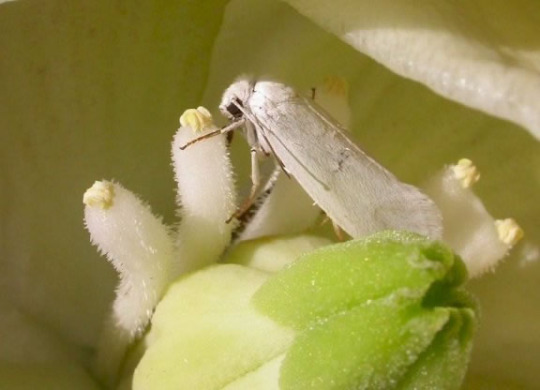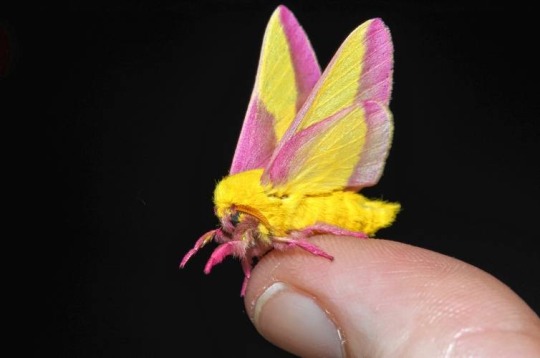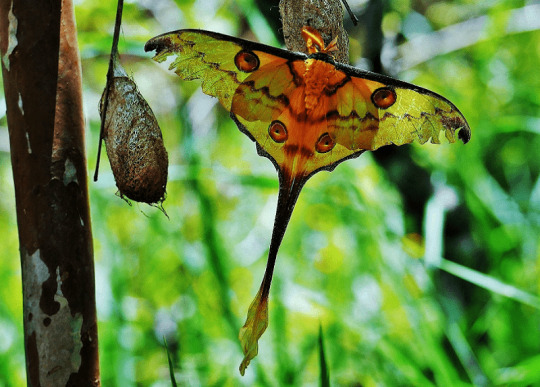Text
Moth Fact: Moths are sometimes pollinators! In fact Yucca plants have their own moth that they rely on to pollinate. These moths have “tentacles” to gather pollen with; these tentacles replace the long tongue most moths/butterflies have. Yucca moths vary on the exact species on yucca plant as well. These beautiful white moths tend to be very small with wingspans never going past 33 mm.


22 notes
·
View notes
Text
Moth Fact: Though to us the Rosy Maple Moth really stands out due to its bright colors; in nature they’re camouflaged well. They hide against the maple tree fruits called samaras. They are a smaller silk moth species. These guys are fairly popular amongst moth owners.



39 notes
·
View notes
Text
Moth Fact: The reason why some moths have a “tail” on their hindwings is to confuse predators. These tails are meant to distract and flutter around. In areas with bats this can even throw off their echolocation. This is why you might see the occasional moth with a tail broken off. Ex. Comet Moth


#moths are cute#mothwing#comet moth#moth answers#moth talks#factsdaily#interesting facts#random facts
13 notes
·
View notes
Text
Rock Fact: Quite a few crystals are variations of quartz. Amethyst is just quartz with more iron inside giving it the beautify royal purple. Agates, Tiger eyes, and even flint!

#quartz#crystals#geology rocks#crystallove#amethsyt#agate gemstone#tigers eye#rocks and minerals#rocks#cool rocks
50 notes
·
View notes
Text
Rock Fact: All crystals are glass! Just not the other way around :D “Crystal glass” is actually just glass added with lead(now usually zinc for drinking glasses) to make it look like a real crystal!

68 notes
·
View notes
Text
Rock fact: Sand is mostly made of small crystals. Minute quartz crystals to be exact. Glass isn’t considered a crystal despite this finding because the lattice is not in crystal structure! While rigidly fixed like all crystals they don’t have an orderly pattern.

19 notes
·
View notes